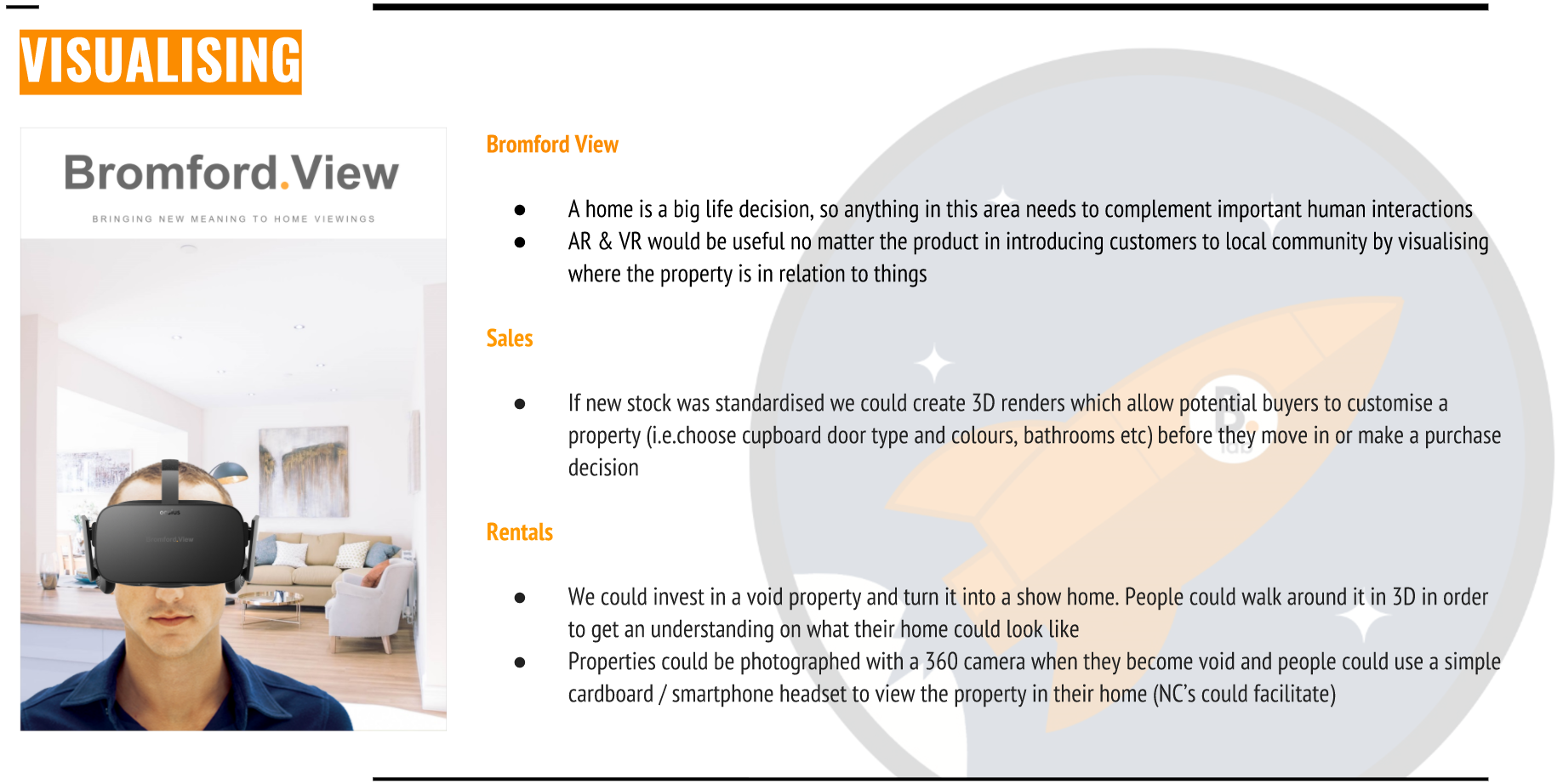Introduction
This was the sixth of our discovery sessions around the 10 ‘how might we’ questions that make up our current exploration pipeline.
Working out loud is one of our Lab guiding principles and we are really keen to share both our colleagues work and their ideas. We are sharing the high-level themes which emerge from each session, rather than waiting for them to be worked up into something more substantial. Following the sessions, the next steps will be for Innovation and Insight is to work up some solid test plans based on what we learned and we will, of course, be sharing more about those in due course.
Workshop Summary
The output from previous service design work formed the starting point.
This question cuts across programmeOne projects 3 and 4.
Our business plan is based upon us building a number of properties per year. If we don't sell or rent those properties we are in trouble. This means that we are now in competition with both the private rented and the general housing market. We have never previously needed to be so proactive.
Key questions to be explored include:
- Do we have a clear idea of what we want to offer to the rental market and buyers market?
- Do we really shape products around customer feedback and aspiration?
- What’s the compelling offer for choosing Bromford?
Strategic Property Planning is a new area and has a number of crucial links with other areas - notably Strategy and Finding a Home. It is the driver for the development of new homes and their transition into management.
The new homes programme currently centres around four main products:
- Retirement Living schemes (nominally consisting of 75 units; 25 ORS, 25 DO and 25 rented)
- My Place (nominally 14 units for rent plus one larger unit as a hub)
- Homes for Outright Sale through land led opportunities
- Rented and shared ownership homes through land led opportunities and via S106
We want to offer a whole life service, where joined-up data is required to help us find out about the customer and their requirements. We are interested in providing the right home for our customers including their next move. We’ll encourage mobility as circumstances or aspirations change. Customers should be able to easily access the information they need on the products and services we have available, or we have in development.
Importantly, this is currently a complex service area that we want to simplify over time. This means challenging ourselves when designing services - we don’t want to recreate today’s complexity in our future offerings.
During the workshop, we provided a set of ‘design fictions’ for colleagues to discuss. Design Fiction is a design practice which offers a way of exploring possible futures by creating speculative, and often provocative scenarios narrated through designed artefacts, which in this case were a set of posters.
The point of the exercise wasn’t necessarily to identify how to move towards these particular futures, but rather use them as a way of generating some interesting and critical conversation around the problem.
During the workshop, some key fundamental principles emerged and colleagues were keen for us to test ways to bring each principle to life:
In all, colleagues came up with 17 high-level ideas which we boiled down into 3 main areas to focus on:
1. MARKET INTELLIGENCE:
What if we were able to pick up weak signals from our communities which enabled us to draw insight around the needs of our market? What if we were able to join up the intelligence we already hold within our teams in order to better identify current need? What if we could use data that is already available through a variety of sources in order to better predict future need?
2. MARKETING:
What if we had a better understanding of our customers? If we had a better understanding of our customer profiles we could design marketing campaigns that would appeal to specific customer segments. The approach we take to market one kind of property might be different to the approach we take to market another. By understanding our market we can tailor our offer to ensure that both existing customers and potential customers are able to take full advantage of the products and services that we offer.
3. FLEXIBLE PRODUCTS:
What if we built a flexible home that could adapt to your changing needs? This could be through the provision of fully or partly flexible space that would allow us or our customers to adapt the property as circumstances change. For customers, this might mean the birth of a child and the need for an additional bedroom, but for us, this might mean being able to quickly adapt our stock over its lifetime in order to meet the needs of a shifting demographic.
Some of the 'wild ideas' included:
- What if we lived with a customer in order to develop a rich/deep understanding of their housing needs?
- What if we designed and built intergenerational schemes?
- What if we designed new due diligence frameworks to support more risk-taking in house building?
- What if we built homes so that upstairs walls could easily be moved in order to make bedroom space more flexible?
We will be working with colleagues in the coming weeks to look at developing some tests. A key priority will be understanding more about both our customer base in 2018 and what our customer base is likely to be in 2038.
Watch this space.
---





